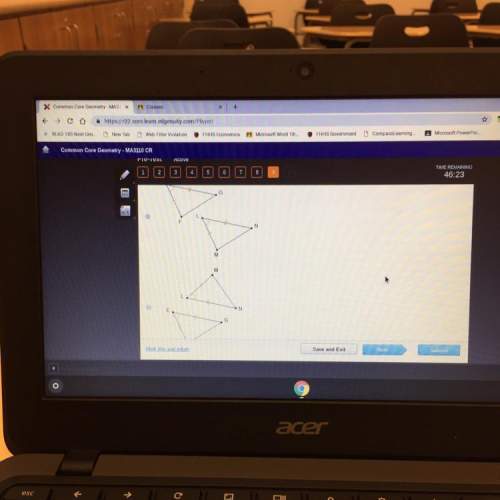
Mathematics, 04.12.2019 03:31 cloey6544
This is an exercise around linearization of a scalar system. the scalar nonlinear differential equation we have is r(t)= sin(x(t)) + u(t). (a) the first thing we want to do is find equilibria (dc operating points) that this system can support. suppose we want to investigate potential expansion points (x",u") with u. = 0. sketch sin(x*) for 4π x< 4π and intersect it with the horizontal line at 0 this will show us the equilibria points. where sin(x0. (b) show that all r(r) = satisfy (7) together with u" = 0. let us zoom in on two choices: π and representative points.) = o. (looking at the sketch we made, these seem like (c) linearize the systern (7) around the equilibrium (x0,u") = (0,0). what is the resulting linearized scalar differential equation for (t)-x-x(t)-0, involving udr) = u(r) _ u" = u(t) 0? (d) for the linearized approximate system model that you found in the previous part, what happens if we try to discretize time to intervals of duration δ? assume now we use a piecewise constant control input over duration δ, that δ is small relative to the ranges of controls applied, and that we sample the state x every δ (that is, at every 1 na where n is an integer) as well write out the resulting scalar discrete-time control system model. this model is an approximation of what will happen if we actually applied a piecewise constant control input to the original nonlinear differential equation. (e) is the (approximate) discrete-time system you found in the previous part stable or unstable? (f) now linearize the system (7) around the equilibrium (x, u") ( π.0), what is the resulting approximate scalar differential equation ) 0? (g) for the linearized system model that you found in the previous part, what happens if we try to discretize time to intervals of duration δ? assume now we use a piecewise constant control input over duration that δ is small relative to the ranges of controls applied, and that we sample the state x every δ (that is, at every , = na, where n is an integer) as well, write out the resulting scalar discrete-time control system. this model is an approximation of what will happen if we actually applied a piecewise constant control input to the original nonlinear differential equation. (h) is the (approximate) discrete-time system you found in the previous part stable or unstable? (i) suppose for the two discrete-time systems above, we chose to apply a feedback law u(r) =-k(x(1) x"). for what range of k values, would the resulting linearized discrete-time systems be stable? your answer will depend on δ.

Answers: 1
Another question on Mathematics

Mathematics, 21.06.2019 17:50
To solve the system of equations below, grace isolated the variable y in the first equation and then substituted into the second equation. what was the resulting equation? 3y=12x x^2/4+y^2/9=1
Answers: 1

Mathematics, 21.06.2019 18:30
The clayton family’s pool has vertices at the coordinates (0, 2), (0, 5), (2, 5), (2, 6), (5, 6), (5, 1), (2, 1), and (2, 2). if each grid square has an area of 9 square feet, what is the area of the pool?
Answers: 1

Mathematics, 21.06.2019 19:30
Complete the solution of the equation. find the value of y when x equals to 1 9x-5y=29
Answers: 2

Mathematics, 21.06.2019 23:30
Segment wx is shown explain how you would construct a perpendicular bisector of wx using a compass and a straightedge
Answers: 3
You know the right answer?
This is an exercise around linearization of a scalar system. the scalar nonlinear differential equat...
Questions


Chemistry, 13.02.2020 00:34




Social Studies, 13.02.2020 00:34




Mathematics, 13.02.2020 00:35


Mathematics, 13.02.2020 00:35











